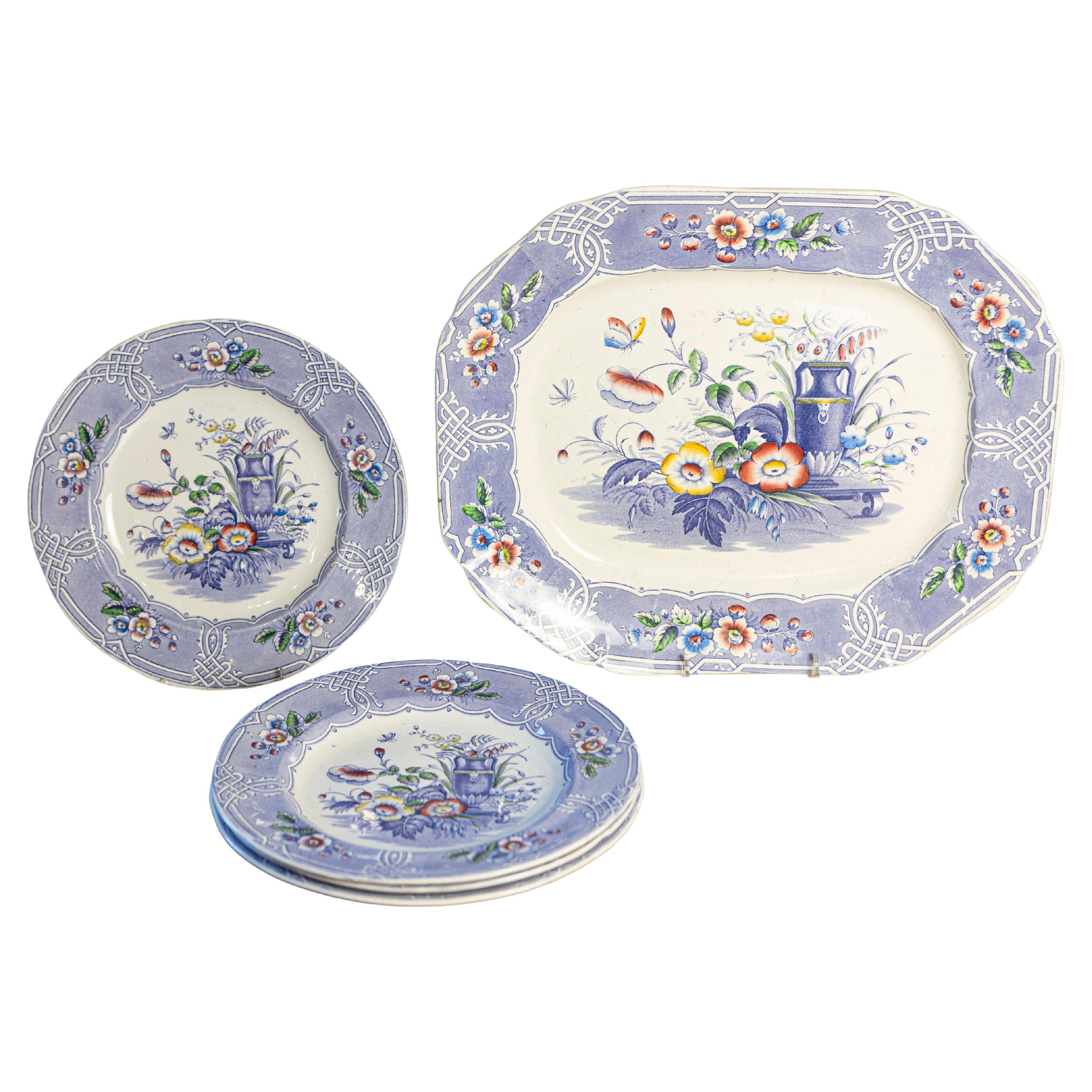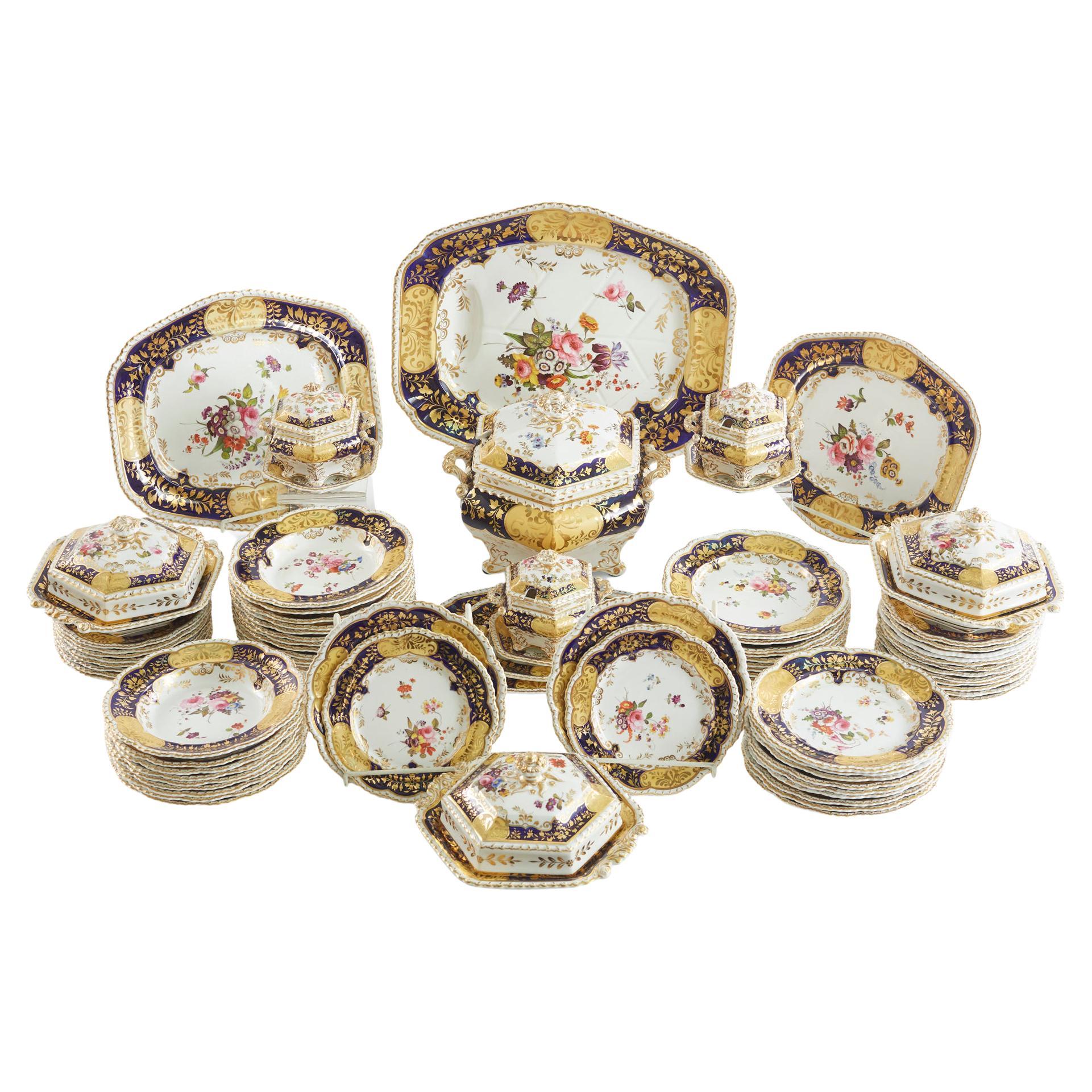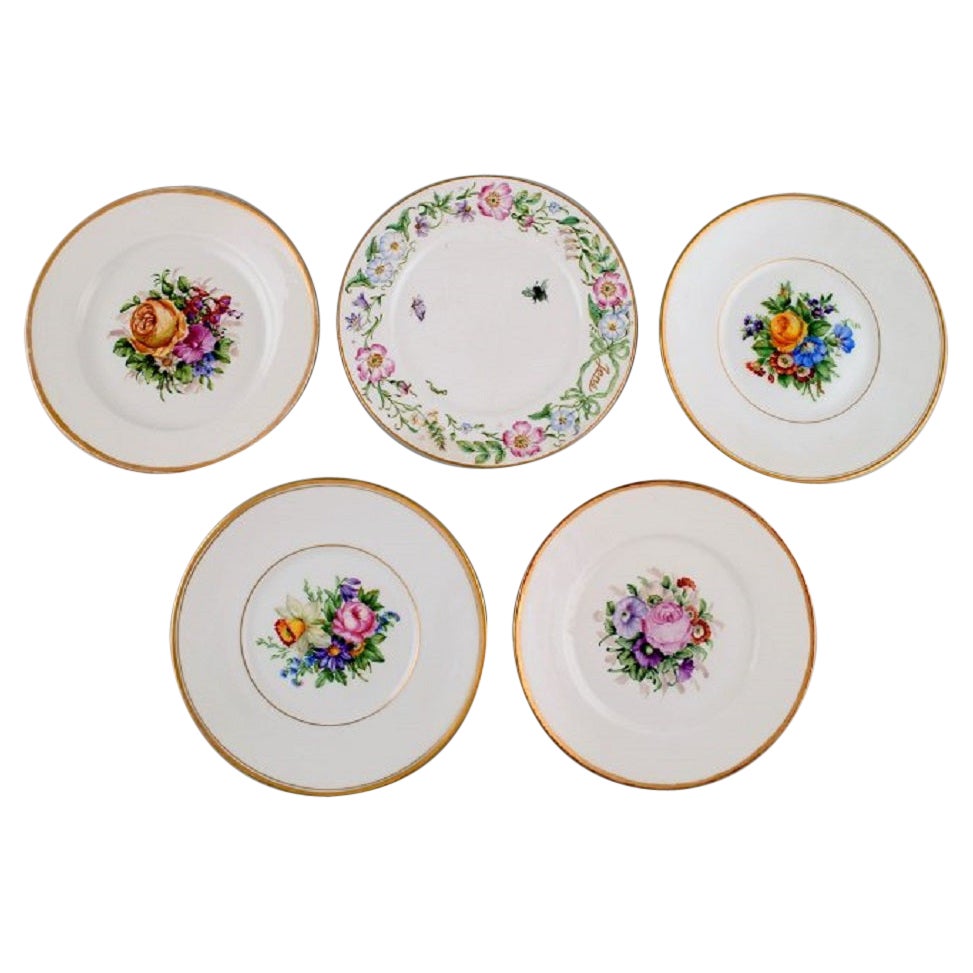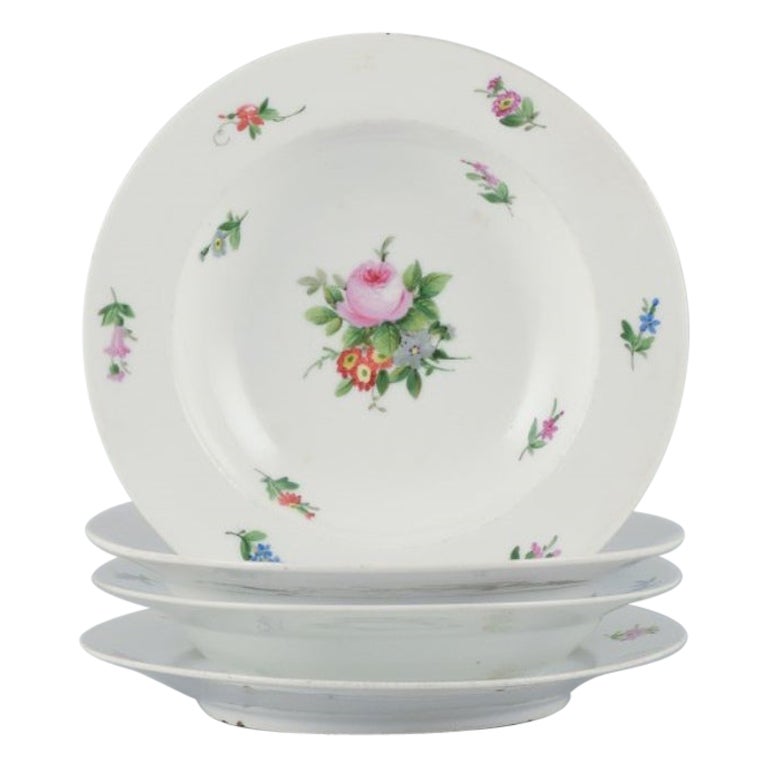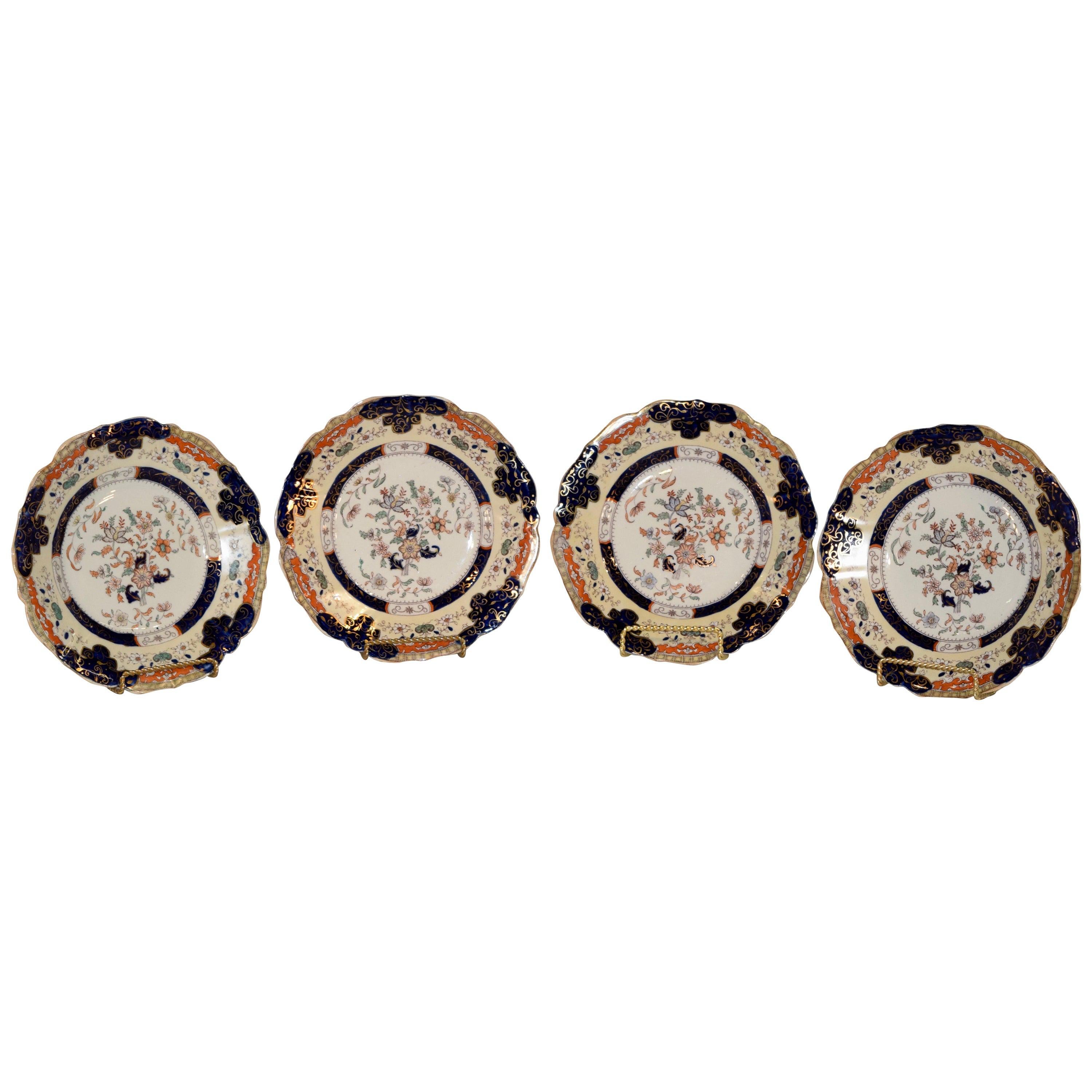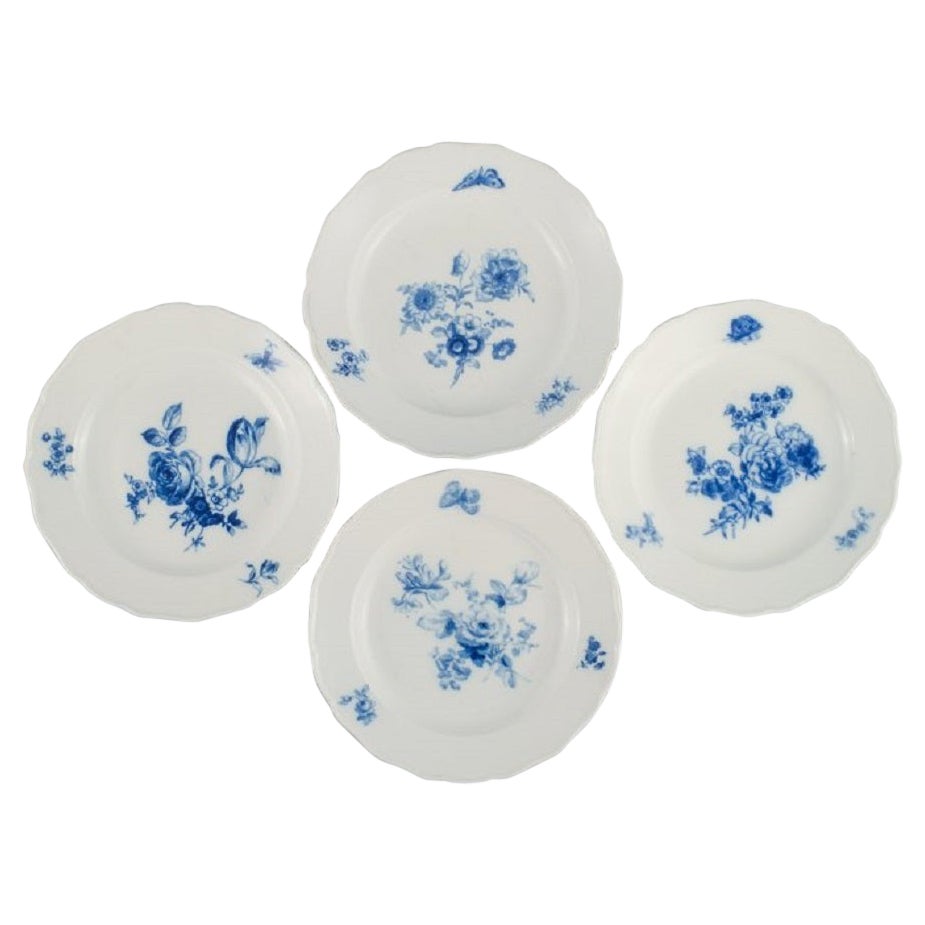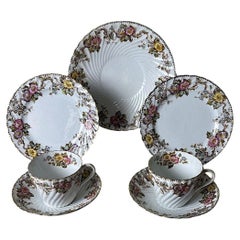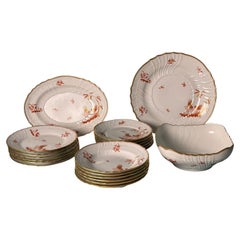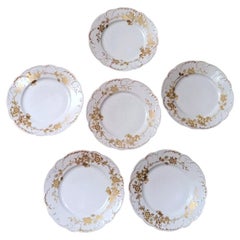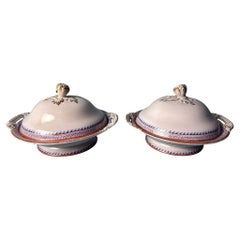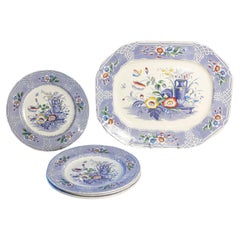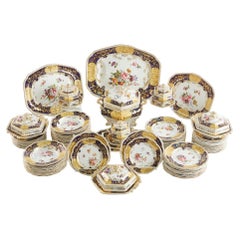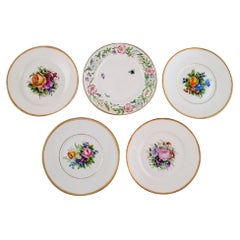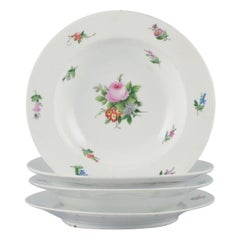Items Similar to Victorian Style Set 4 English Plates Transferware Decorations Royal Arms Mark
Want more images or videos?
Request additional images or videos from the seller
1 of 18
Victorian Style Set 4 English Plates Transferware Decorations Royal Arms Mark
$1,052.46per set
£800.04per set
€890per set
CA$1,479.07per set
A$1,608.28per set
CHF 847.41per set
MX$19,535.94per set
NOK 10,653.61per set
SEK 9,986.90per set
DKK 6,812.25per set
About the Item
We kindly suggest you read the whole description, as with it we try to give you detailed technical and historical information to guarantee the authenticity of our items.
Refined and elegant English decorative ceramic plates; the set consists of two 27 cm.27 diameter plates and two 22 cm.22 plates; perfect for hanging on the wall. The plates were decorated using the "transferware" method, this type of work refers to glazed and decorated pottery with a specific treatment that they produced in Staffordshire England; they used copper plates on which the design was engraved, the plate was then inked and the design transferred to a special fabric that was later placed on the pottery (plates, trays, soup tureens etc.) which was glazed and fired; the first to use this printing process were John Sadler and Guy Verde of Liverpool in 1756. If we look at ceramics made by this method we will notice that the designs are not perfect and often the ink is smudged; this is their characteristic. A hand-painted plate service could afford to a few English families, with this method even middle-class families could have a decorated plate service. Our plates, after transferware processing (which was only blue) were hand-finished with soft, refined colors and then fired again in the kiln to fix the coloring; these additional steps made them even more precious and unique. They were produced between 1837 and 1840 in an artisan workshop in Staffordshire; we cannot trace the name of the company because the artisans used "Royal Arms" as their trademark without including their company name, which was often the case when workshops were small and had few employees. However, the workshop's production had to be of a high standard, in fact, the "Royal Arms" mark (the royal coat of arms of the United Kingdom, which includes the English lion and Scottish unicorn supporting the shield with the royal crown) could only be used legitimately by companies holding a Royal Warrant. Precise regulation for the use of this prestigious royal mark was secured by Queen Victoria in 1837; during her 64-year reign, the queen and her family were responsible for granting more royal warrants than ever before-more than 2,000. Analyzing the graphics of our mark we can date it between 1837 and 1840. The plates are in good condition, only one of the small ones has an original craquelé effect. Measurements large plates diameter cm.27 height cm.3 each, small plates diameter cm.22, height cm.2 each. For all our shipments we use special packaging materials (custom-made wooden crates, styrofoam, etc.) for maximum protection and safety of the items.
- Dimensions:Height: 1.19 in (3 cm)Diameter: 10.63 in (27 cm)
- Sold As:Set of 4
- Style:Victorian (Of the Period)
- Materials and Techniques:
- Place of Origin:
- Period:
- Date of Manufacture:1837-1840
- Condition:Wear consistent with age and use. The plates are in good condition, only one of the small ones has an original craquelé effect.
- Seller Location:Prato, IT
- Reference Number:Seller: 129981stDibs: LU4632235255242
About the Seller
5.0
Platinum Seller
Premium sellers with a 4.7+ rating and 24-hour response times
Established in 1977
1stDibs seller since 2019
296 sales on 1stDibs
Typical response time: <1 hour
- ShippingRetrieving quote...Shipping from: PRATO, Italy
- Return Policy
Authenticity Guarantee
In the unlikely event there’s an issue with an item’s authenticity, contact us within 1 year for a full refund. DetailsMoney-Back Guarantee
If your item is not as described, is damaged in transit, or does not arrive, contact us within 7 days for a full refund. Details24-Hour Cancellation
You have a 24-hour grace period in which to reconsider your purchase, with no questions asked.Vetted Professional Sellers
Our world-class sellers must adhere to strict standards for service and quality, maintaining the integrity of our listings.Price-Match Guarantee
If you find that a seller listed the same item for a lower price elsewhere, we’ll match it.Trusted Global Delivery
Our best-in-class carrier network provides specialized shipping options worldwide, including custom delivery.More From This Seller
View AllStaffordshire Pair Of Coffee/Tea Cups With Saucers And Dessert Tray
Located in Prato, Tuscany
Elegant and delicate English porcelain coffee set, consisting of two cups with saucers, two dessert plates, and a matching round tray. Each piece bears the mark of Jones, Shepherd & ...
Category
Antique Mid-19th Century British Early Victorian Porcelain
Materials
Porcelain
Richard Ginori Galli RossiPorcelain Dinnerware Set, Doccia Manufactory, Florence
By Richard Ginori
Located in Prato, Tuscany
We kindly invite you to read the full description, as we strive to provide detailed historical and technical information to ensure the authenticity of our pieces.
Elegant 20-piece po...
Category
Late 20th Century Italian Chinoiserie Porcelain
Materials
Porcelain
Haviland Limoges 6 French White Porcelain Flat Plates and Gold Decorations
By Haviland & Co.
Located in Prato, Tuscany
We kindly suggest that you read the entire description, as with it we try to give you detailed technical and historical information to guarantee the authenticity of our objects.
We ...
Category
Early 20th Century French Napoleon III Porcelain
Materials
Porcelain
Victorian English Porcelain Tureens Pair Transferware Decoration And Gilt Accent
Located in Prato, Tuscany
We kindly invite you to read the full description, as we strive to provide detailed technical and historical information to ensure the authenticity of our pieces.
Elegant and refined...
Category
Antique Mid-19th Century British Victorian Porcelain
Materials
Porcelain
Staffordshire Potteries English Tray with Blue Transferware Decorations
By Clementson Brothers
Located in Prato, Tuscany
We kindly suggest you read the whole description, because with it we try to give you detailed technical and historical information to guarantee the authenticity of our objects.
Lovely and refined English oval ceramic tray; elegant and rich blue decorations have been executed on the white background using the transferware method; the mark on the back tells us exactly that the object was produced by the Clementson Brothers LTD Company between 1901 and 1913 at the Phoenix factory in Shelton, the company made a wide range of objects with this decoration called "Delf" ( see mark no.909 p.150 of "Encyclopaedia of British Pottery and Porcelain Mark"). Transferware, which was very fashionable in the Victorian period, refers to glazed and decorated pottery with a specific treatment that they produced in Staffordshire, England; they used copper plates on which the design was engraved, the plate was then inked and the design transferred to a special fabric that was later placed on the pottery (plates, trays, tureens, etc.) which was glazed and fired; the first to use this printing process were John Sadler and Guy Green of Liverpool in 1756. If we look at the pottery made by this method we will notice that the designs are not perfect and often the ink is smudged: this is their characteristic. A hand-painted plate service could afford few English families, with this method even middle-class families could have a decorated plate service. The Clementson Firm was founded in 1839 by Joseph Clementson, who retired from the business in 1867, leaving the factory to his four sons and son...
Category
Early 20th Century British Victorian Ceramics
Materials
Ceramic
Deruta Set Of 5 Italian Ceramic Plates With Cobalt Blue Decorations
Located in Prato, Tuscany
We kindly encourage you to carefully read the description below, which provides detailed technical and historical information to ensure the authenticity of our artifacts.
This set in...
Category
Mid-20th Century Italian Neoclassical Revival Ceramics
Materials
Ceramic
You May Also Like
Set of Five 19th Century English Rare Floral Pattern Ironstone Dishes
Located in Atlanta, GA
A set of five English ironstone dishes from the 19th century, with rare floral pattern. Created during the 19th century, this set of five ironstone dishes features four plates (each ...
Category
Antique 19th Century English Serving Pieces
Materials
Ironstone
19th Century British Porcelain Dinnerware Service
Located in Tarry Town, NY
Mid 19th Century British porcelain dinnerware service with hand painted gilt foliate borders with bouquets of wild flowers against a whit...
Category
Antique 1820s English Tableware
Materials
Gold
$24,000 / set
Five Antique Royal Copenhagen Porcelain Plates, Late 19th C
Located in København, Copenhagen
Five antique Royal Copenhagen porcelain plates with hand-painted flowers, insects and a gold border.
Late 19th century.
Diameter:...
Category
Antique Late 19th Century Danish Porcelain
Materials
Porcelain
Royal Copenhagen, set of four rare and antique Saxon Flower porcelain plates.
Located in København, Copenhagen
Royal Copenhagen, set of four rare and antique Saxon Flower porcelain plates.
Hand-painted with polychrome floral motifs.
Three deep plates ...
Category
Antique 19th Century Danish Porcelain
Materials
Porcelain
19th Century Set of Mason's Plates
By Mason's Ironstone
Located in High Point, NC
19th century set of four English ironstone plates, signed Mason's over a crown and banner. The plates are transfer decorated in a pattern of florals ...
Category
Antique 19th Century English Victorian Dinner Plates
Materials
Ironstone
$395 / set
Four Antique Meissen Dinner Plates in Porcelain, Late 19th C
Located in København, Copenhagen
Four antique Meissen dinner plates.
Hand-painted with blue flowers and butterflies.
Late 19th century.
D 24.0 x H 3.5 cm.
Marked.
In excellen...
Category
Antique Late 19th Century German Porcelain
Materials
Porcelain
